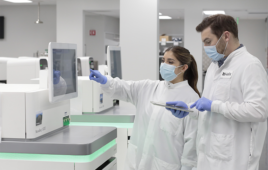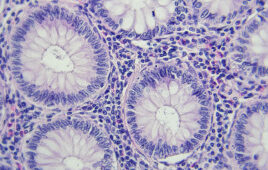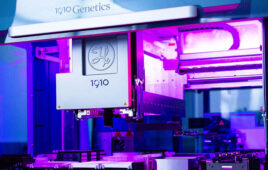Researchers at Mayo Clinic have discovered a gender-linked susceptibility gene for late-onset Alzheimer’s disease.
The Mayo Clinic reported the results of their two-stage genome-wide association study of patients with Alzheimer’s disease in Nature Genetics. The research showed that women who inherited two copies of a variant in the PCDH11X gene, found on the X chromosome, are at considerably greater risk of developing Alzheimer’s disease. Women with a variant on one of their two X chromosomes also had some increase in risk, as did men with the variant on their single X chromosome, but these effects were weaker than inheriting two variants.
Investigators caution that more study is required before assigning the definitive degree of risk the gene seems to carry, but they say it appears to be one of the stronger risk factors found to date.
‘This is a very common genetic variant, and many women who had two copies of it did not have disease. But, overall, the odds were substantially greater that female patients with the disease did have two copies,’ says the study’s senior investigator, Steven Younkin, M.D., Ph.D., a consultant-researcher at Mayo Clinic’s campus in Florida and George M. Eisenberg, Professor of Neuroscience in the College of Medicine. ‘The results obtained do not imply that women are generally at increased risk for developing the disease than men.’
The Mayo group first detected a variant in the gene PCDH11X, which associates with susceptibility to Alzheimer’s disease, by scanning the entire genome of 844 patients affected with Alzheimer’s disease and 1,255 unaffected control subjects. The association was confirmed by studying an additional 1,547 patients and 1,209 controls.
The variant was found in 79 percent of unaffected women; 50 percent had one copy and 29 percent had two. Since men have one X and one Y chromosome and women have two X chromosomes, the variant occurred in only 46 percent of unaffected men where a single copy was present.
To put these findings in context, the odds ratio for two copies of the well-established, high-risk APOE 4 allele was 11.5 in the subjects assembled by the Mayo group, and it was 4.8 for one copy, Dr. Younkin says. APOE 4 is the highest-risk Alzheimer’s disease susceptibility allele found to date. The association for women with one copy of the PCDH11X variant is similar to genetic associations now being reported for many diseases, but the strength of association when two copies were present is noteworthy particularly because the PCDH11X variant is so common, investigators say.
PCDH11X encodes a protocadherin that is included in a family of cadherin molecules that promote cell-cell adhesion and signaling in the central nervous system. Some evidence suggests that protocadherins are processed by presenilins linked to early-onset familial forms of Alzheimer’s disease, the researchers say.
‘The goal now will be to conduct further studies of this gene to determine the precise mechanism by which genetic variation in PCDH11X influences the risk of Alzheimer’s disease and if the findings can be translated to improved diagnostics and therapeutics,’ Dr. Carrasquillo says.
Release Date: January 11, 2009
Source: Mayo Clinic
Filed Under: Genomics/Proteomics




